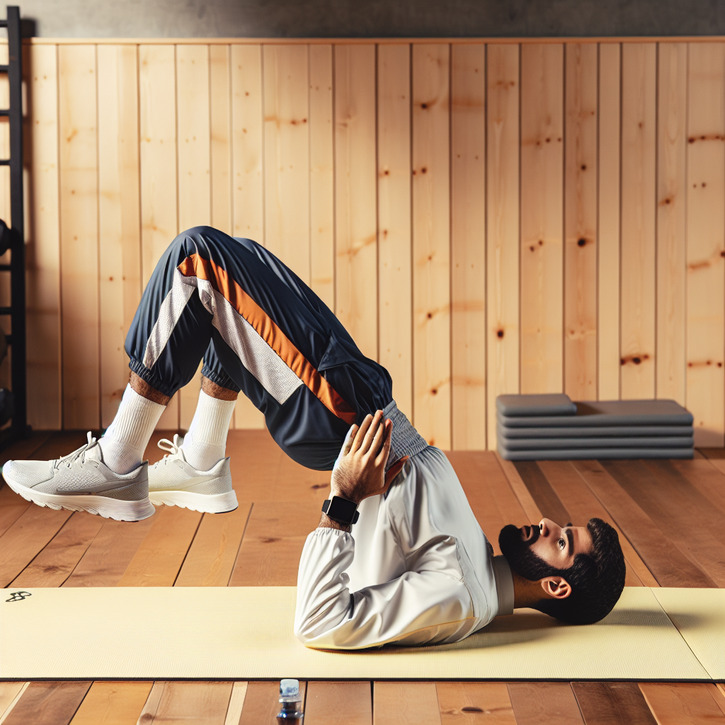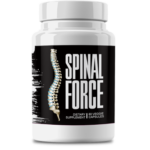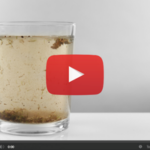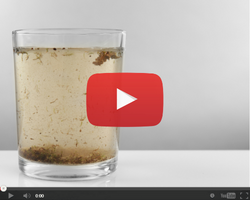This Village-Made Chinese Pain Reliever Eliminates Back And Joint Pain!
How to Alleviate Pain in Hip Area: Expert Tips and Advice

Understanding Pain in Hip Area
Common Causes of Hip Pain
In the hip area, there can be a mix of issues that may result from acute injuries to chronic conditions. The causes of hip pain are likely to be such as overuse injuries, osteoarthritis, or bursitis. Both athletes and older adults are more inclusive to these issues. Hip fractures in addition to tendinitis and labral tears are frequently encountered Furthermore, in the phenomenon. The identification of the main cause of hip pain is crucial for the identification of the most successful interventions and, in turn, relief. It is necessary to be in touch with a doctor to get an appointment for the exams needed. A healthcare professional can help you to identify the underlying cause and devise treatment plans going through the usual medications, exercises, or lifestyle changes.
Symptoms to Watch For
Early recognition of illnesses due to hip pain can be an important means of gaining early treatment. The most common symptoms of hip pain involve stiffness, inflammation, and tenderness around the area of the hip joint. In addition, you may also feel "limited mobility," and, therefore, can't care for your daily life. Some of the sufferers point to a sound of something like "clicking" or "popping" occurring in the area of the hip joint. Please get in touch with your doctor if your symptoms are still there after several days. Make sure to visit a doctor who will be responsible for the condition and also suggest treatment modalities.
When to Seek Medical Advice
A lot of times mild hip pain at home can be dealt with on your own, while some symptoms may need to be checked by doctors. If you are feeling pain that is so severe that it gives you no chance to support the other leg, you should seek help right away. Similarly, in case the pain is followed by fever, redness or warmth in the area, then it is more likely to be an infection. Chronicity of hip pain for more than a few weeks, having a serious impact on your daily life, is another possible indicator of the presence of more serious issues. It is a wise idea to get a healthcare support provider that aids you in managing your chronic hip pain.
At-Home Remedies for Pain in Hip Area
Rest and Ice Application
Just get the time to recover and use ice to get rid of the hip pain. When you stop doing the physical activity then the injured tissues tend to heal, and ice applications can help to reduce swelling and pain in a numb way. Do cold therapy with a towel-secured ice pack on the pained part every 15-20 minutes a number of times a day. This way of dealing with hip pain is especially effective for acute injuries and results in immediate relief. Make sure, however, that the ice is not placed directly on the skin so as to prevent it from frosting over.
Over-the-Counter Pain Relievers
OTC (over-the-counter) pain relievers are the best way to manage hip pain. Ibuprofen and Naproxen are non-steroidal anti-inflammation drugs (NSAIDs) and are working through the anti-inflammatory and pain-relief method (e.g. the first two). Acetaminophen is another alternative of which the pain may not disappear but it will relieve the MU which will be talked about next. The dosage should be always observed and the patients should be asked the doctor if they have already some other diseases or if they need to take some other medicine. OTC pain relievers are not only handy products but also easy ones for getting momentary relief from poor health.
Gentle Stretching Exercises
One way of reducing hip pain and enhancing the flexibility of your body is to get habitual with mild stretching exercises. Ends of stretching exercises, which are the hip flexors, hamstring, as well as gluteus muscles, release them of stiffness thus also reducing the stiffness of the entire body. Some well-regarded exercises are the hip flexor stretch, seated forward bend, and butterfly stretch. Hold each stretch for 20-30 seconds and repeat it several times throughout the day. As pain will be gone you must then start to take part in other strenuous activities. Exercise that involves stretching not only offers immediate relief, but it also delays future aches by maintaining joint mobility.
Physical Therapy and Exercises
Importance of Physical Therapy
Motion control as with physical therapy is an innovative strategy for eliminating the pain in the hip resulting from chronic conditions or injuries. By consulting a professional you may be guaranteed a comprehensive and clear-cut exercise plan that is developed only for you, which is oriented on correct hip joint muscles strengthening, as well as proper movement. Manual techniques, therapeutic exercises, and modalities like ultrasound or electrical stimulation are some of the methods that can be used in the therapy methods. Scheduled regular sessions enable you to remove the source of pain, initiate muscle activity, and avoid future injuries thanks to the resolution of the muscular imbalances of your hip pain.
Recommended Hip Stretches
Putting some of the prescribed hip steps into your weekly plan can be a way for the carrier too many of the annoying suchings You should get them also post-release.
Incorporating specific hip stretches into your routine can provide significant relief from discomfort. Personal suggestions like the first being to acutely stretch the hip flexor with the additional ones and also extra IT band stretches, they are the other exercises that can be tried. These are straight on target to the hamstring muscles and other tendons in the hip, which is in fact, the area for flexibility and reduced tension mediated. A day by day stretch lasting about 20-30 seconds and repeated several times acts as one must do in order to gain the best results. Regular stretching techniques promote not just the reduction of pain but also the prevention of joint disease and relieving this way the muscle stiffness through movement that supports the pain management of the hip.
Strengthening Exercises for Hip Muscles
The firming of the muscles around the hip is the main way for reducing pain and preventing injuries. The exercises are well originated and developed to ensure that everyone gets the instruction that they need regardless of their strength or mobility levels. Exercises include clamshells, bridges, and leg lifts which are some of the exercises responsible for the toning of the buttocks, hip abductors, and the core muscles. Perform these workouts using the correct technique and gradually add weight as you gain strength. Balancing techno, which is somewhat similar to yoga, is used to lose weight. The exercises can be performed three days a week at max and they have been proved to deliver excellent results as they maintain long-term relief from pain.
Benefits of Aquatic Therapy
Water therapy is an ideal way of subduing hip pain, apart from its non-invasive feature and is proved to be supremely useful. The upward lifting of the water eases the load on the joints, and free movement and exercise are possible. Water resistance is a kind of natural resistance training, which also helps to build muscles without the imposition of the hip. Exercises for aquatic therapy treatment could be developed using water saddle lots, leg kicks, and slow stretches. This type of therapy is really a suggested discipline for people with arthritis or with those recovering from hip surgeries. It aids in healing and mobility improves significantly.
Lifestyle Changes to Alleviate Pain in Hip Area
Maintaining a Healthy Weight
Healthy weight maintenance is at the heart of the matter of mitigating hip pain and averting future occurrences. Added body weight acts as a stress driver and, therefore, worsens the problems of the condition. In taking food, a balanced diet, which is characterized by consumption of fruits, vegetables, lean proteins, and whole grains, you can achieve and maintain a healthy weight. To mention a few, jogging, slow swimming, cycling are a few good low-impact exercises that help to manage our weight. The Along with good nutrition, regular exercise becomes necessary in living a healthy weight, which directly affects the permissible load on your hips as well as the whole joint health.
Proper Posture and Ergonomics
Proper posture and safety net play a key role in preventing and overcoming hip pain. Make sure the workplace is made ergonomically to avoid your laming your hips and lower back. Use a chair that has adjustability and lumbar support without a shortcut feature and the whole thing should stay on the floor. When you are in an upright position, you are likely to depress the left leg too, which will prevent further straining of your hip and knee. Alternatively, you can take a little break to change your angle, and do some simple exercises to loosen your muscles. Maintaining good posture and ergonomics can help relieve hip joints from unnecessary pressure and thus contribute to long-run pain.
Choosing Supportive Footwear
Proper footwear (which can be called as supportive) is needed in order to maintain hip health and to decrease hip pain. Shoes with good arch support, cushioning, and a stable heel each can be of great help in the distribution of weight equally and therefore a reduction of hip stresses. Stay away from high heels and shoes that are not well fit, they both can add up to hip pain and even bring wrong posture. Custom orthotics or insoles might be helpful, too. to those with particular foot conditions. You can have the satisfaction of your hip pain lessening and your total comfort and mobility of the body are improved for good if you spend your money on supportive, good quality footwear that will help you bear your hip pain.
Medical Treatments for Pain in Hip Area
Prescription Medications
In cases of more severe or long-lasting hip pain, the doctor might prescribe some medications to the patient. Pain-relieving drugs that are more effective, such as opioids for instance, might be the ones you have been prescribed by your doctors. The other ones are anti-inflammatory drugs, corticosteroids, for instance. These are drugs that work by reducing swelling in the nerves and joints and yes, they are mind-blowing. However, the intake of these drugs must follow the prescription and go through the advice of your healthcare provider.
Corticosteroid Injections
People who suffer from hip pain that is caused by inflammation, like bursitis, or arthritis that can be inflammatory all the time have the opportunity to use corticosteroid injections in order to relieve their pain. These injections are a form of anti-inflammatory medicine that is concentrated in the area of pain. Subsequently, the pain is decreased in a quick manner and it stays gone for a long time. The surgery is done in a clinical environment by the doctor and can include a course of imaging to make sure the needle is placed in the right place. Corticosteroid injections can be very effective in most cases but they should be generally done only a few times a year due to the serious side-effects that might appear. Before you decide on this therapy with your doctor see if it is safe for your case.
Surgical Options
If conservative treatments do not give relief, it may be necessary to consider surgery options. Hip surgery can vary from minimally invasive arthroscopic procedures to total hip replacement, depending on how bad the problem is. Labral tears or the removal of loose cartilage are some of the issues that arthroscopy can tackle, while hip replacement is a surgery suggested only in extreme cases of arthritis or joint damage. Recovery from surgery consists of physical therapy and rehabilitation to bring back function and strength. The orthopedist will make a judgment of your kind of ailment and then give you the most suitable operation that will make the pain go away.
Alternative and Holistic Approaches
Acupuncture for Hip Pain
The eastern practice and art of acupuncture that has been proven as a good therapy by the ancient Chinese medical practitioners are swaying in favor of this in an alternative way to hip pain treatment. By specific needle insertions into some specific points on the body, acupuncture is centered on helping to balance the body energy and driving the body to naturally heal itself. Most people will express that their impart of pain has lessened, and also the mobility got better after the completion of every acupuncture therapy session. This complete approach that combines the use of conventional methods along with acupunctural therapy alone is what is called a holistic approach. It is vital that getting the proper instrument from a professional and licensed acupuncturist that is experienced and skilled in handling your discomfort is an extremely important goal to attain the necessary security for your health.








